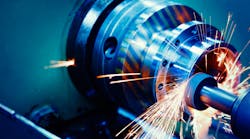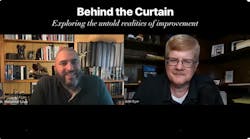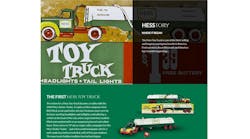We’re confident that readers are familiar with terms like “gemba walk” and “going to the gemba.” The practice of getting oneself to where the work is being done and seeing what is happening there is a central principle of lean management.
Lean practitioners are taught to “go see” in order to truly understand just how well (or not) manufacturing processes are performing. Rick tells clients that they should organize their operations so that anyone can see at a glance whether the processes are in control … or not. Ron, early in his career, learned to “go see” by simply “standing in the circle,” which entailed simply standing in one spot out on the shop floor where he could observe anything that struck him as unusual or abnormal. In today’s data-intensive world, though, managers convince themselves that they can keep up with operations just fine simply by looking at spread sheets on their computer screens. When Rick advocates making information about operations visible on the plant floor, he often gets the response, “Well, that’s already on the computer. Why do we need to display it on the floor as well?”
The answer is that “going to the gemba” allows a manager to employee all of his or her senses. Going to the gemba, then, involves, not only “go see” but “go see, hear, smell, and touch.” Numbers on a spread sheet can provide a good deal of information, of course. But they don’t highlight the subtleties and nuances of the flow of material and work on the plant floor. That sort of data-gathering requires that managers are out there on the floor, making use of all their senses.
Telltale Signals
It's been said that the first time we listen to a piece of music, we hear nothing. The distinctive shades of a complex piece of music become evident only after listening to it many times. The same is true when immersing oneself in the cacophony that is any manufacturing operation.
For example, many operations use compressed air across the shop. A barely audible hiss of air can tell a manager a great deal about the overall condition of machine air fittings, air lines that are tired, cracked, and no longer able to deliver proper pressure to machines. Finding and repairing air leaks will lower compressed air costs, compressor maintenance costs and improve the performance of operating equipment, thus avoiding quality issues and even scrap.
Squeaks, rattles and whirring noises that emanate from machinery can be precursors to bearing issues, gear wear and other conditions that can lead to unplanned downtime. This is just one more reason as to why walking the shop floor as part of your gemba tour can and often does uncover telltale signals about the condition and health of operations that can save tons of money by avoiding unwanted downtime and unplanned events.
Many years ago, Ron managed a large gauge plastics vacuum forming shop. During the molding process, there was a host of pressure relief valves that opened and closed. Only after listening to the “music of the machine” many times was he able to make distinctions among the myriad noises the machine made. After many instances of “going to the gemba,” he could tell whether each of the five rotary vacuum-forming machines was operating properly and could even make a judgment as to whether the machine cycle time was correct.
Studies show that the human sense of touch in unique is the animal kingdom. Our fingers are sensitive enough to detect a surface bump just one micron high, the diameter of a bacterial cell. Our thermal sensory system is extremely sensitive as well; we can detect temperature differences of just a few hundredths of a degree.
Detecting Differences
As we walk around the shop floor, regularly putting our hands (safely, of course) on equipment, machinery, electric panels, gear boxes, and other surfaces can provide baseline data that might allow us to catch small changes later. A temperature change of a few degrees or a small increase in vibration might uncover problems in their earliest stages. Ron once caught a developing bearing failure when he noticed very small increases in temperature and vibration on an automated transfer line. Further analysis confirmed that the bearings were, indeed, very near their end and were replaced at the next changeover. Downtime and scrap were avoided.
Perhaps because our best animal friends, our dogs, have such well-developed senses of smell, we’re accustomed to thinking that our own schnozzes don’t work that well. That’s a mistake. Research has found that humans are able to detect more than one trillion different smells! It turns out that we do better than even dogs and pigs (famous for their truffle-detecting snouts) with respect to certain smells. Cooks and bakers understand that their senses of smell are among their most important tools. The same can be true of manufacturing managers.
All these benefits come through making lots of visits to the manufacturing floor. As we mentioned, our senses are exceptional at detecting differences. You might not be able to identify the specific pitch of a certain sound, but you can tell when a whirring noise gets a bit sharper after you’ve heard it many times. You might not be able to tell the specific temperature of a surface, but you can tell when it gets just a tiny bit warmer. It might be difficult to pinpoint the source of a particular odor, but we can all tell when there is a different smell in the air. Our remarkable senses make it possible to catch problems early. The key is to get out into the operating environment frequently and purposefully use as many of those extraordinary senses as you can whenever you do.




